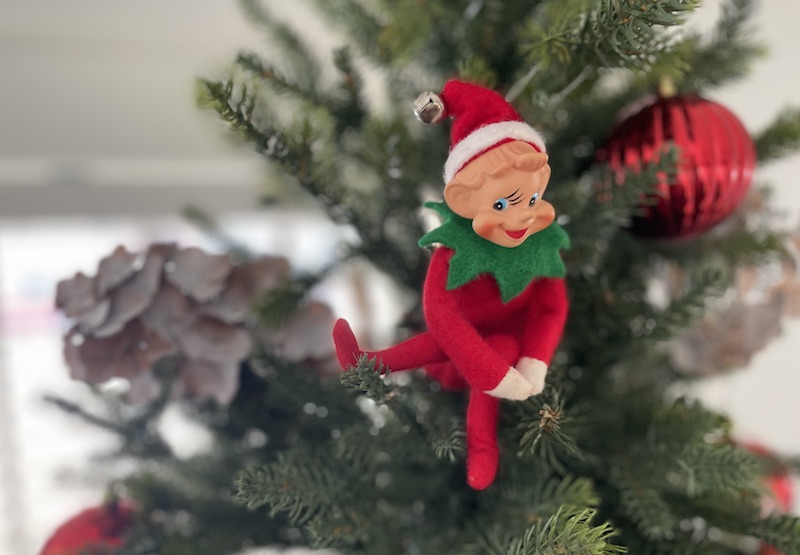Before the Thanksgiving turkey heads into the oven, many of you will be thinking about putting up a Christmas tree. To be eco-friendly — should it be real, artificial or something else?
Most experts agree a real Christmas tree is more eco-friendly than artificial, but both come with environmental impacts.
Choose zero-waste
For a truly zero-waste option, you can purchase a potted tree to plant after the holidays – or rent a live tree.
A live, potted tree will require more care, and you can only keep it in the house for a few days. If you’re planting it, it’s best to dig a hole before the ground freezes, and then be prepared to plant it the day after Christmas.
Renting a tree is currently available in limited parts of the U.S. and U.K, but is continuing to grow with demand. In California, Rent a Christmas Tree has been renting out potted Christmas trees since 2009. Prices for a Douglas Fir at Rent a Christmas Tree start at $40 for a three-foot tree that is delivered in a pot and picked up after the holidays. You get to pick your tree variety and size when you rent, and each tree comes with care directions. After the holidays, the company repots it for growth for next year’s rentals, or it’s planted in the ground.
Find a local, real tree
If you decide to cut down a tree, it’s still more sustainable than an artificial one because you’ve chosen both a renewable and biodegradable natural resource. On average, it takes about seven years to raise a Christmas tree to marketable size. During that time, it is absorbing carbon dioxide and filtering the air of particulate matter and releasing oxygen. It is also providing watershed protection and habitat for birds and other wildlife. Christmas trees are planted and raised as a crop by tree farmers. Unlike other row crops, a Christmas tree plantation remains green and growing year round. If there was no market for real Christmas trees, that land would probably be developed for something else. For every Christmas tree that is harvested nationally, two to three seedlings are planted.
To make your choice even more sustainable, select a tree from a local Christmas tree farm instead of purchasing one from a big-box store that trucks them in from across the country. There are many local tree farms that can be found near Kansas City, nationwide and beyond at Pick Your Own Christmas Tree.
Skip the fake one
In contrast, artificial Christmas trees are made primarily of metals and plastics, which are all non-renewable resources. The plastic material, typically polyvinyl chloride (PVC) is a potential source of lead. The potential for lead poisoning is considered high enough that California requires a warning label on all artificial trees made in China, where an estimated 85 percent of trees are manufactured. Additionally, these trees must be transported 8,000-plus miles to their U.S. destination, which emits additional CO2.
On average, an artificial tree is used for seven years before it ends up in the landfill. So, if a tree is displayed for one month per year, that means it will have been used for a total of seven months, and will remain in a landfill indefinitely. Even if it were to be used for 20 holiday seasons, it’s still going to end up in a landfill far longer. In contrast, a real tree can be composted, submerged in ponds for fish habitat or chopped into wood chips.
Or buy “pre-owned”
If someone in your family is allergic to evergreen trees, and you can’t imagine Christmas without a tree, another choice is to purchase a used, artificial tree from a thrift store, and save it from the landfill for a few more years. When the tree is no longer usable, the branches can be cut and repurposed into other decorations like swags, wreaths and garland, further delaying its final destination.

Locally, if you don’t mind a bit funkier tree, consider asking a local farmer/landowner who has eastern red cedars (Juniperus virginiana) growing on their land if you could cut one for your tree. These trees are native to this area but are invasive in pastures and roadsides and are taking over native prairies and hay fields, so cutting one of them is a win-win proposition, especially since they won’t resprout if cut below the bottom branch, unlike so many other trees, meaning that the stump does not have to be sprayed.
The cedar is a bit prickly, but is more fragrant than many other evergreens, and like other Christmas trees, they can be chipped up into wood mulch or thrown into a lake for fish habitat after the holiday. Also, be sure to keep it well watered so it doesn’t dry out!